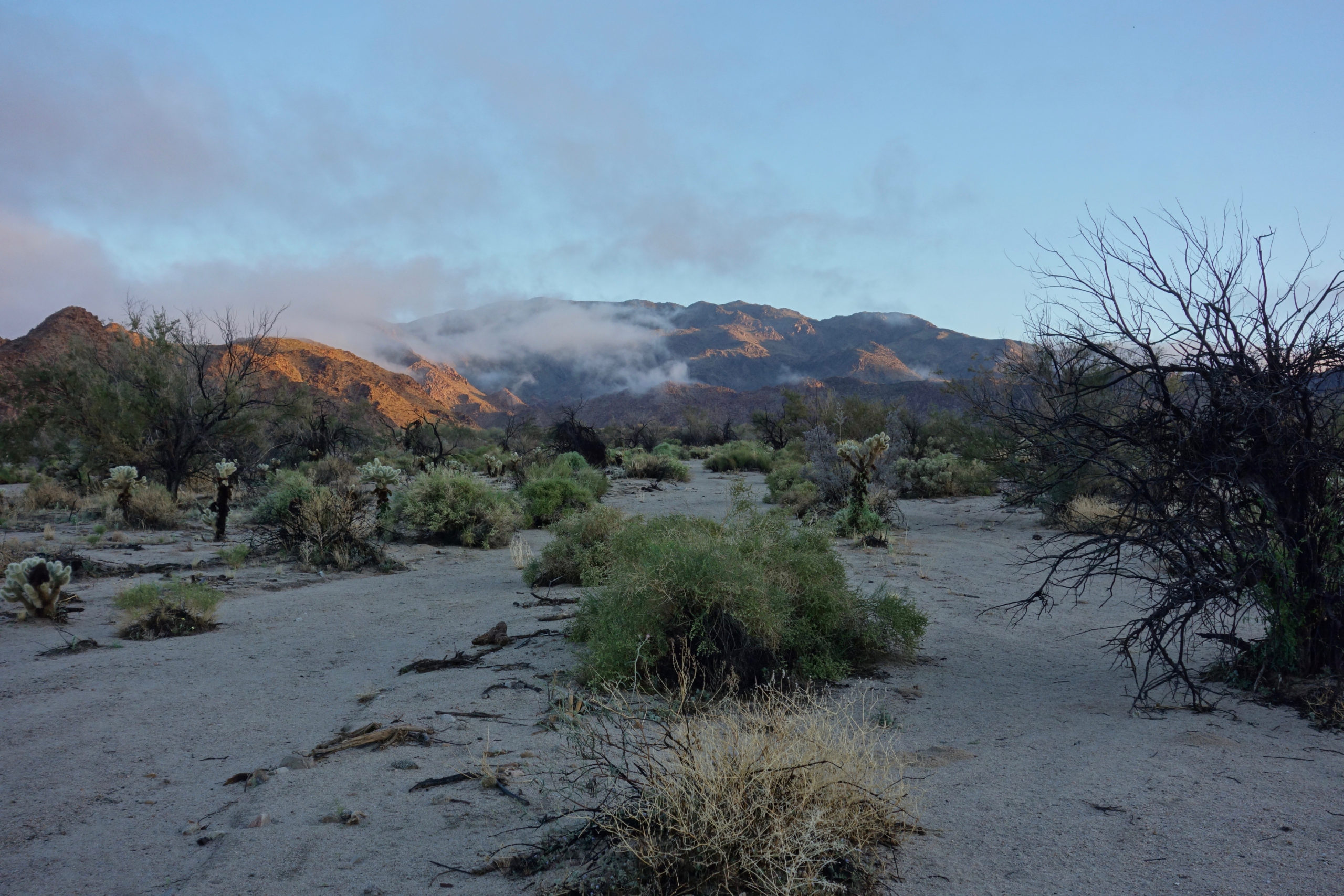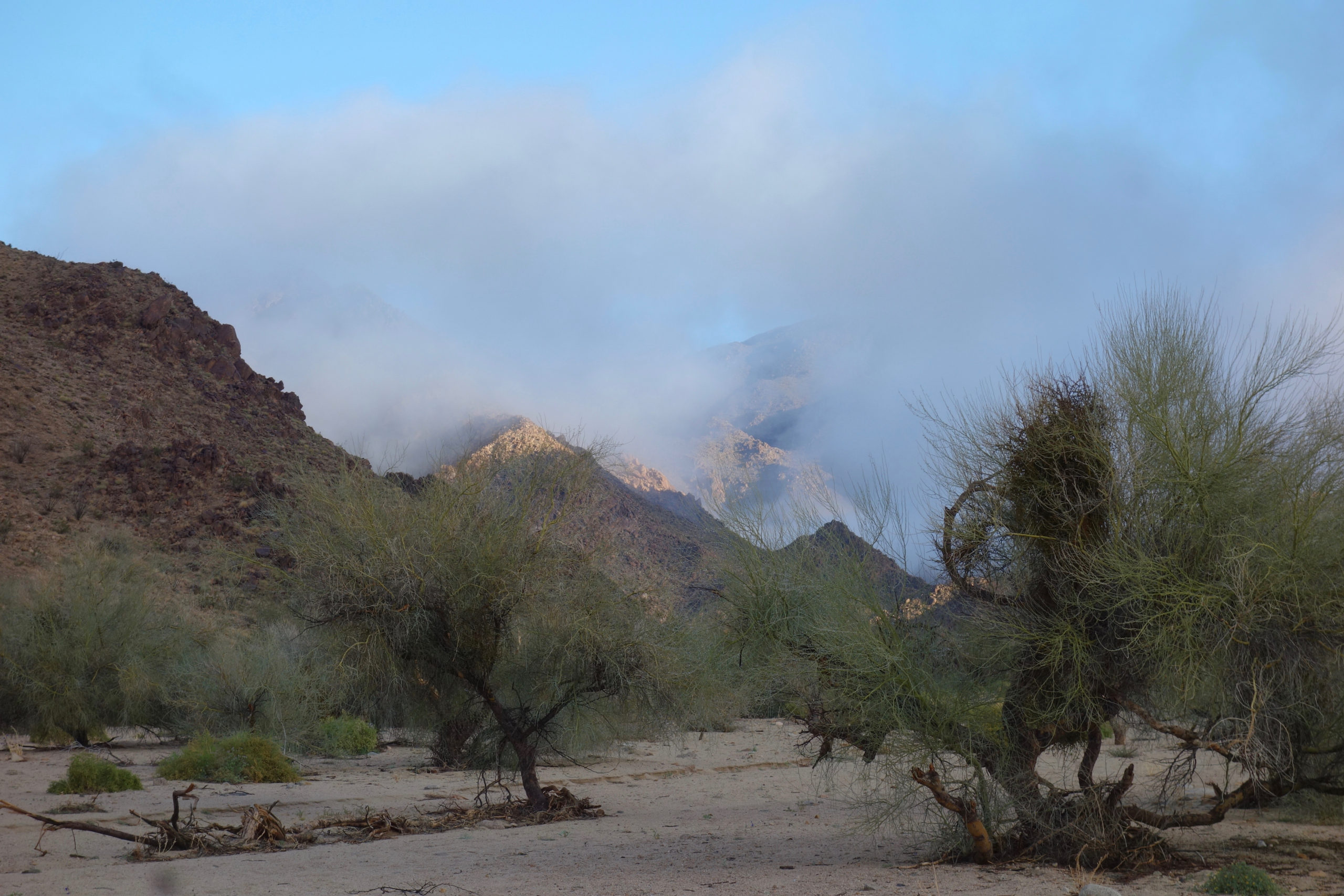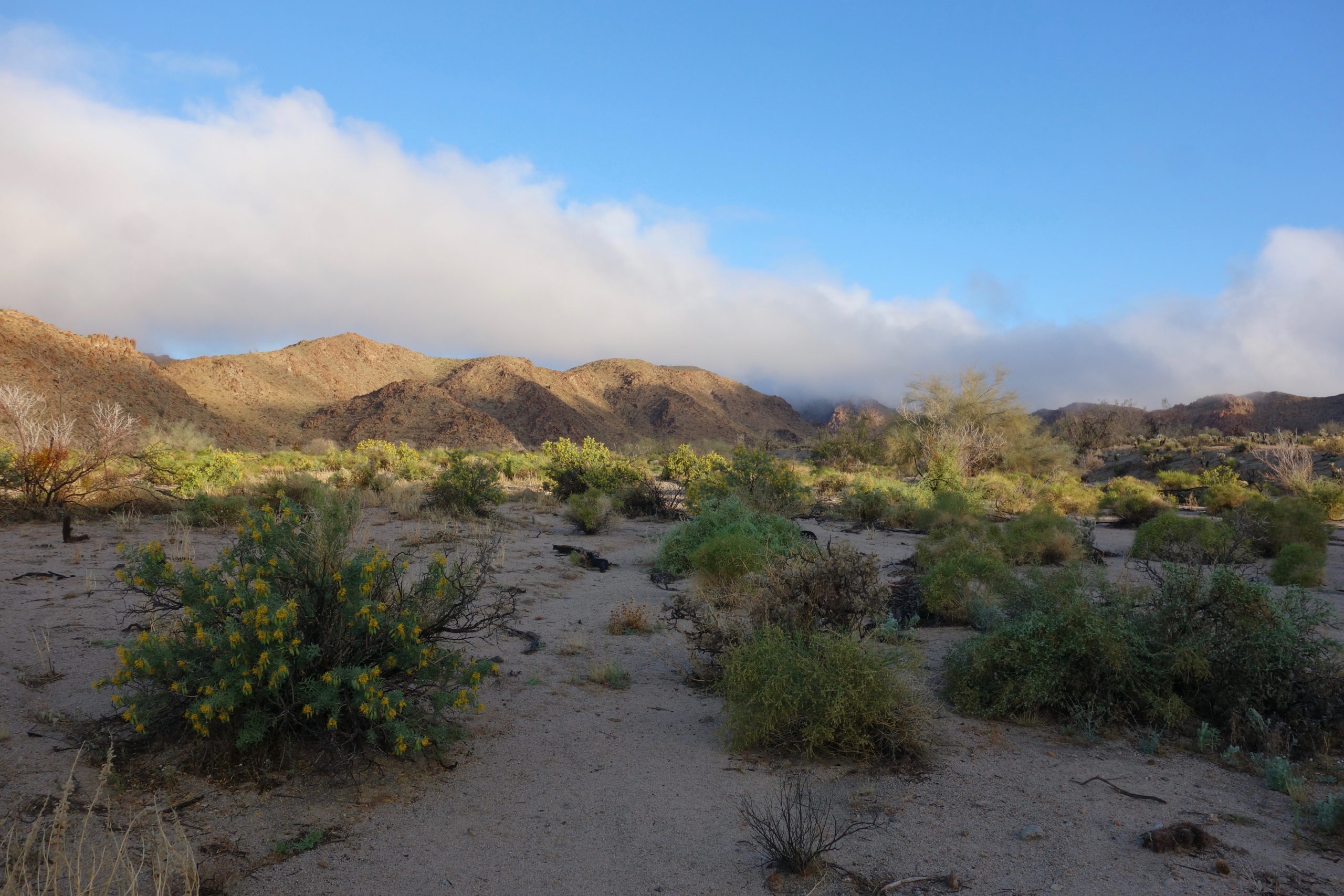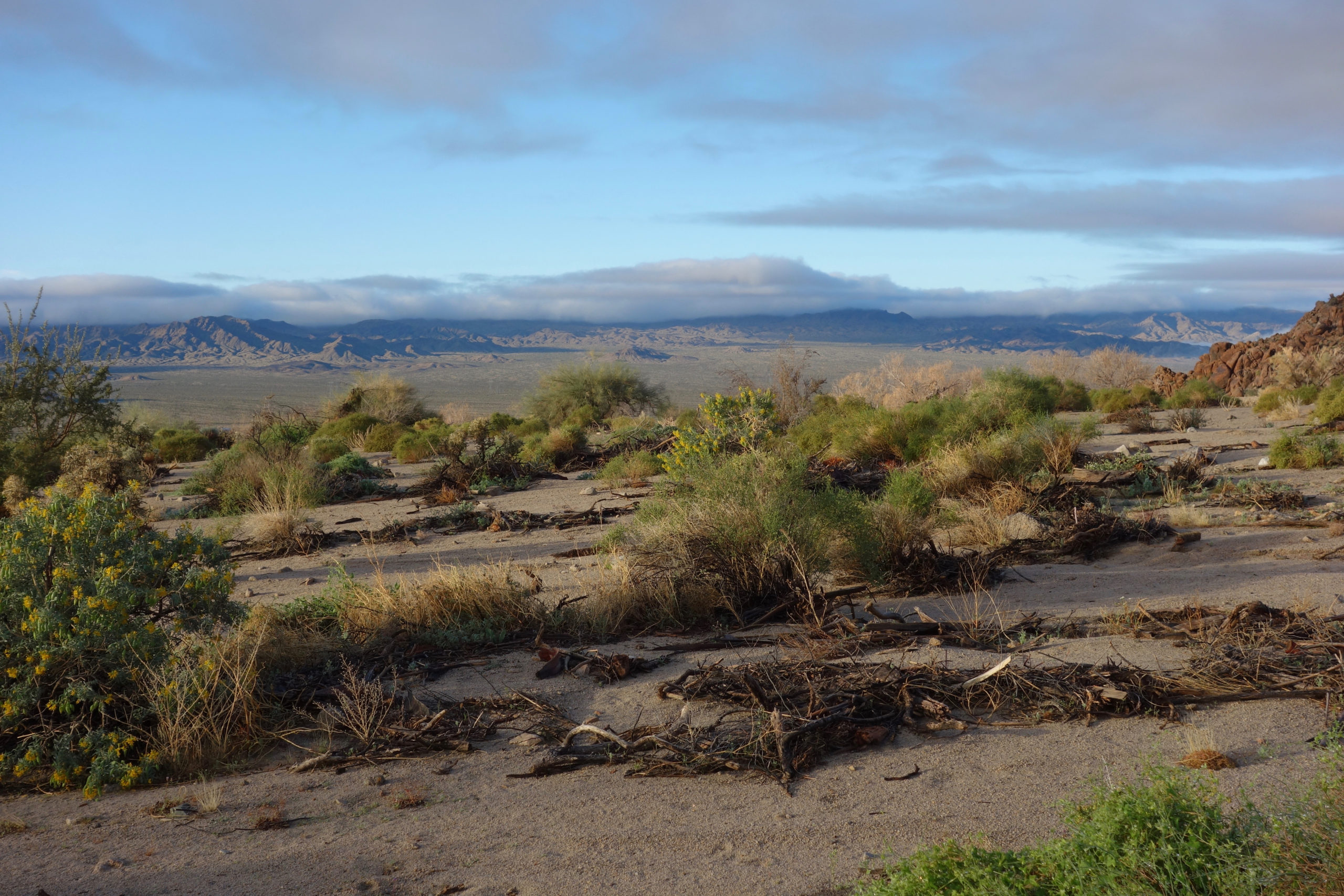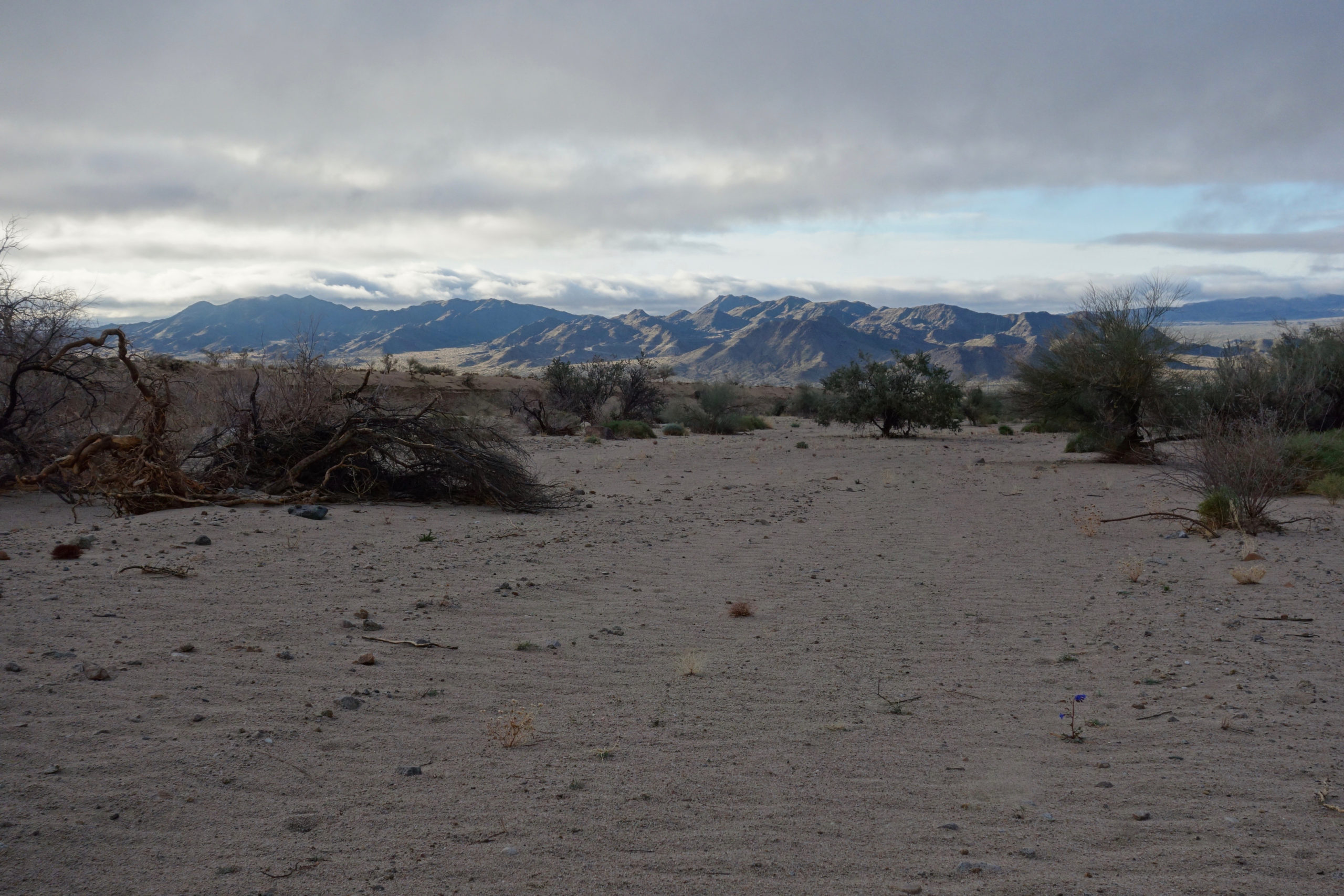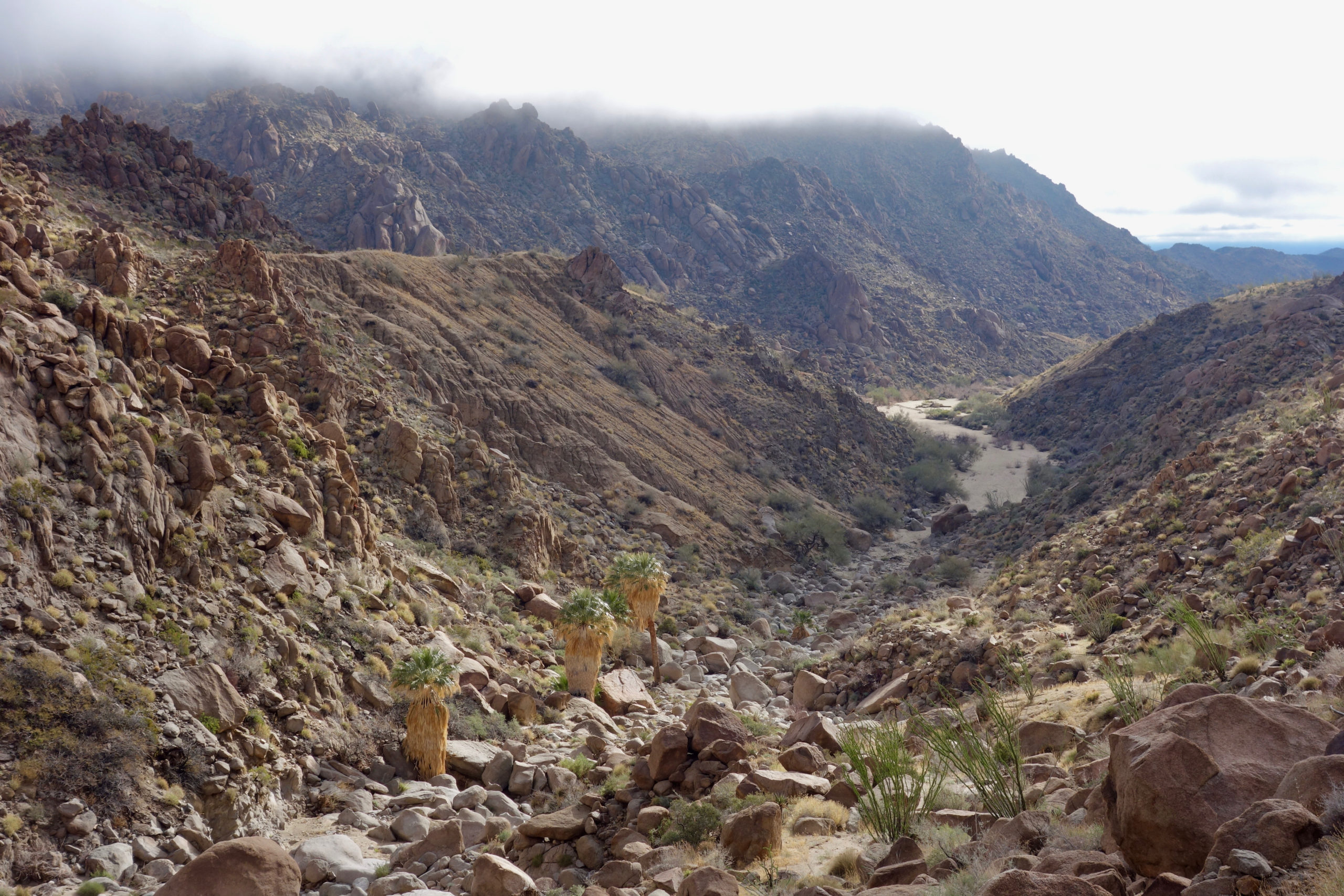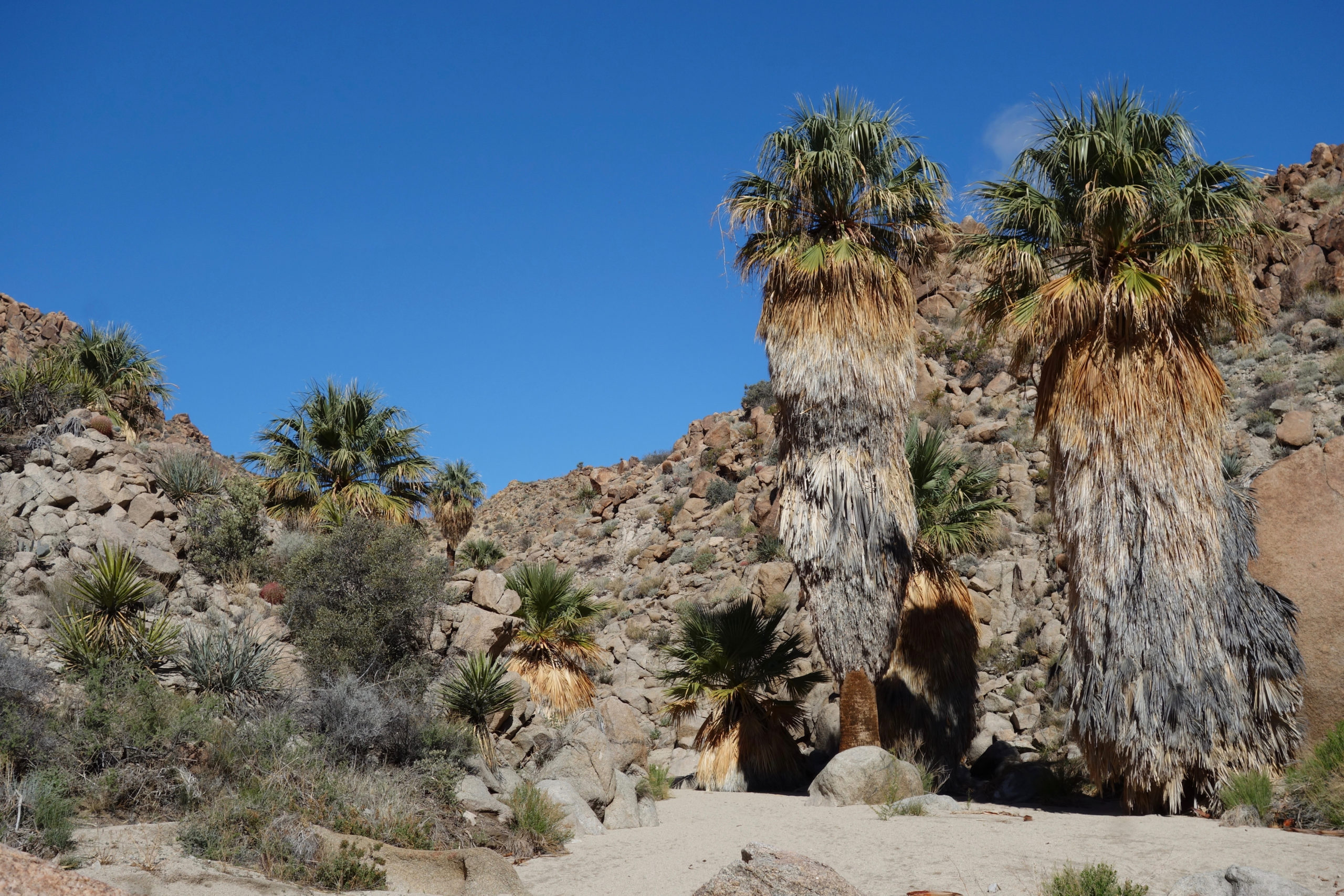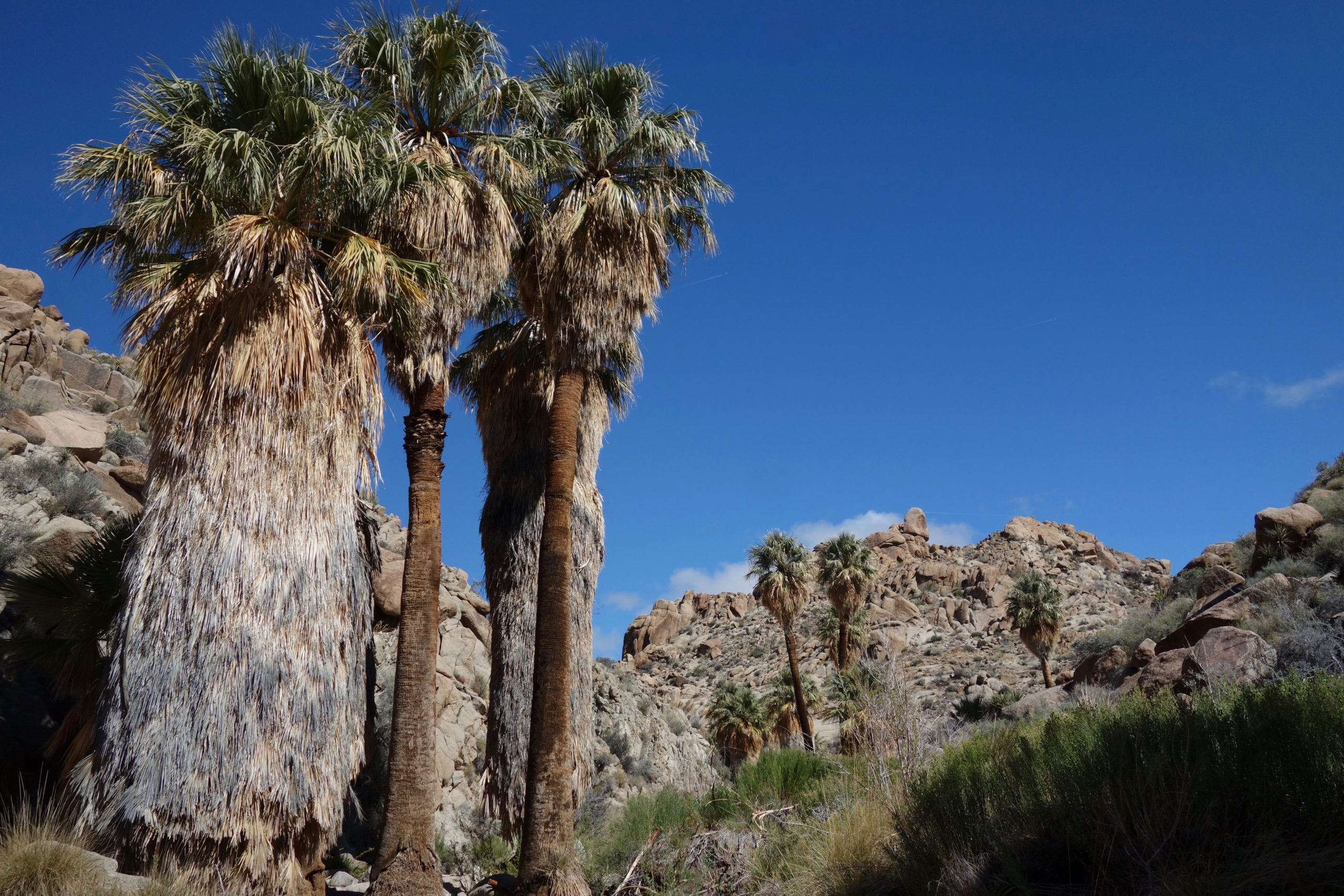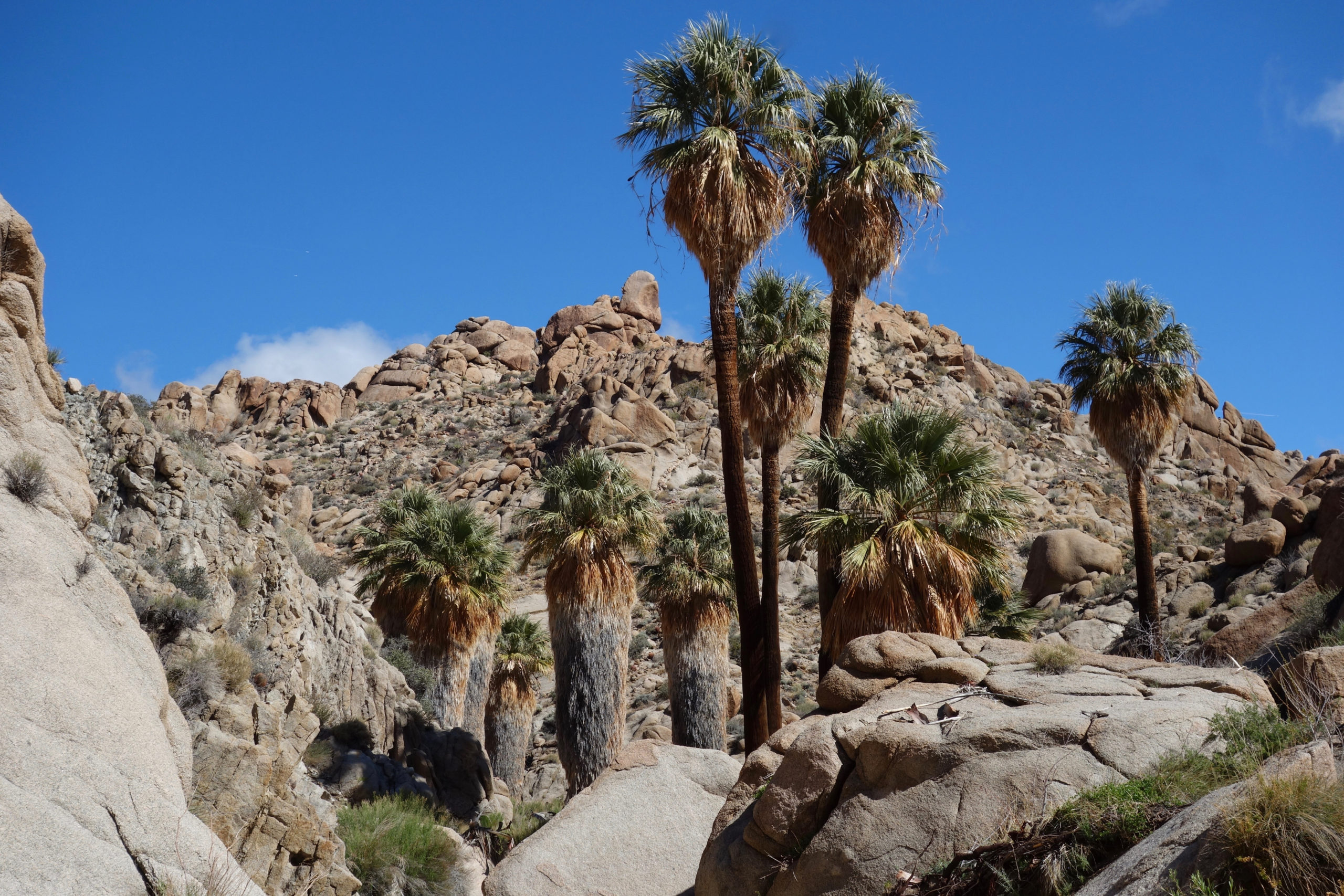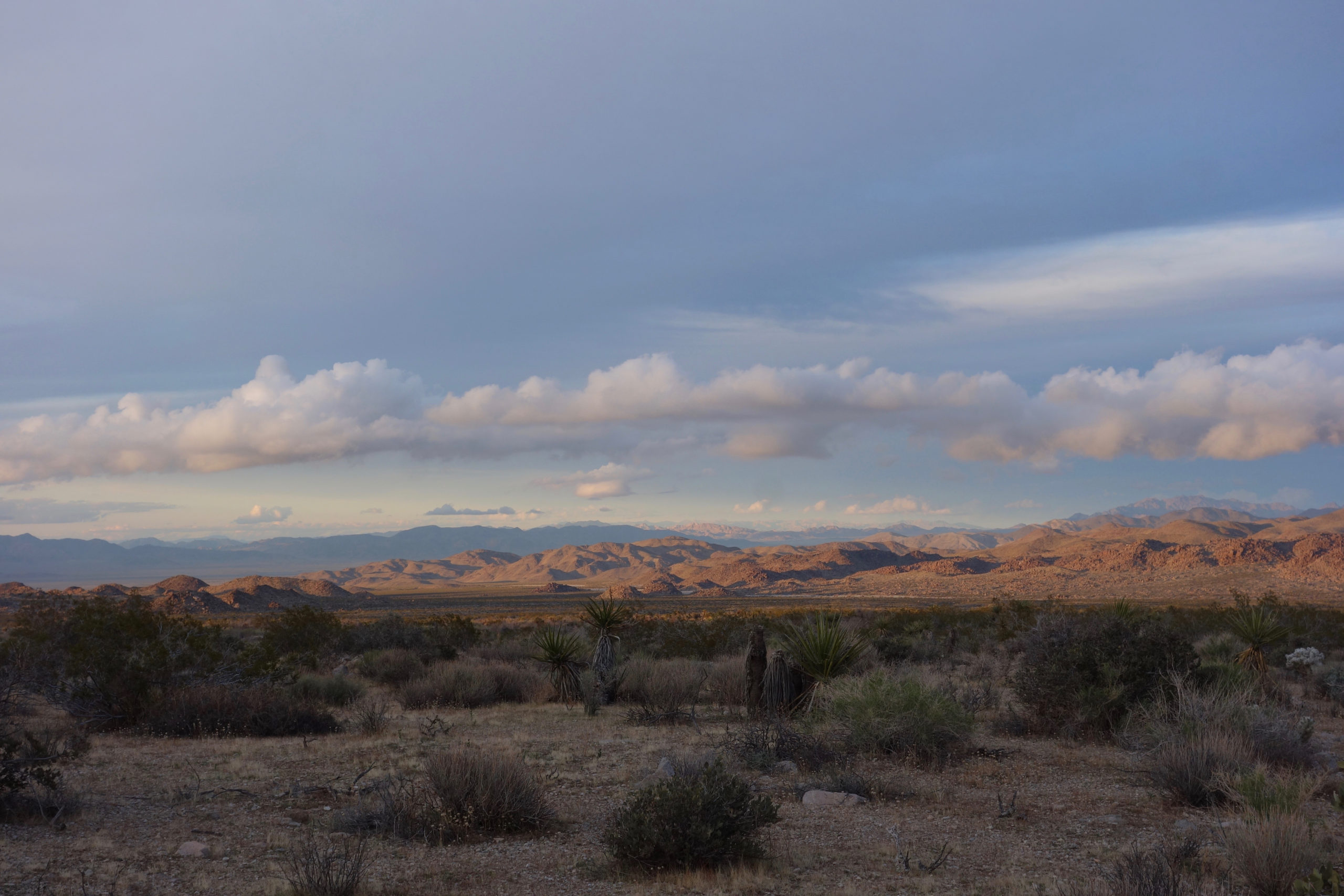Rained most of the night again but let up before dawn, the rain being replaced by fog. Although my tarp did a fine job of keeping the rain out, it is not so good at keeping out the fog. Everything inside was clammy.
But that’s why I bring a stove. A hot cup of coffee and a warm bowl of oatmeal with dried peaches were just the thing to get me started.
The rising sun began to burn the clouds off, producing some very striking scenes as I headed up the broad wash that leads to several palm oases.
The wash narrowed just before Victory Oasis and the easy walking turned into steep scrambling over car-size boulders.
It took me nearly an hour to make the half mile to Lost Palms Oasis but it was well worth the effort. Not that I had another choice of route.
The bird life was abundant and active, more than happy to share their joy at accessing water and trees.
The Lost Palms Oasis extends perhaps half a mile along the canyon and must support close to a hundred palms. Another line of palms extended up a side canyon as well.
Water in the desert changes one’s perspective – of water, of deserts, and what it means to be alive. Where there is water there is life, and it seems that nothing more is needed. It’s a gift. Like all gifts, it is unearned. Nothing is certain, all is contingent. But that contingency is enough.
I began seeing day hikers above the oasis, the first hikers I have seen since the naked guy near Box Canyon. There is a trail–a real trail–from Cottonwood Springs about 3 miles away, and I gladly made use of a route that was free of rocks and catclaws and also offered views of the Orocopia Mountains, still clouded in, where I was yesterday.
I made it to the campground at 1, filled up on water, had a bit of a siesta and headed east through the trailless valleys of eastern Joshua Tree.
The walking was fine – the vegetation well-spaced, the grades gentle, the openness and views outstanding.
I walked until my feet tired of carrying 8 days of food and 6 L of water and then stopped and set up camp.


